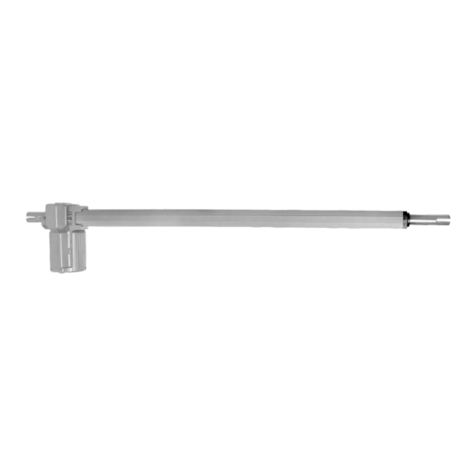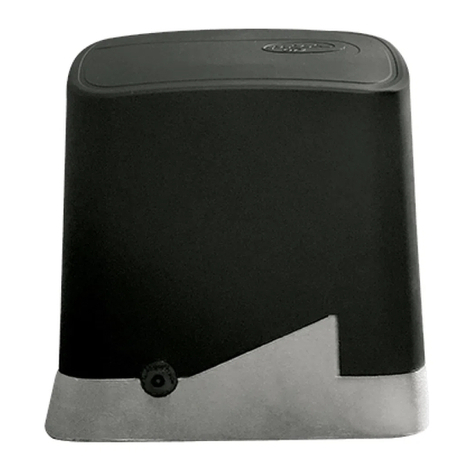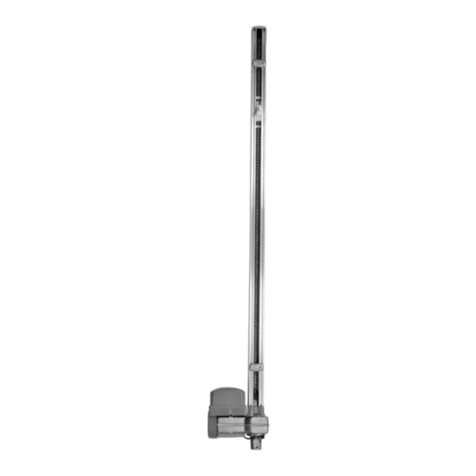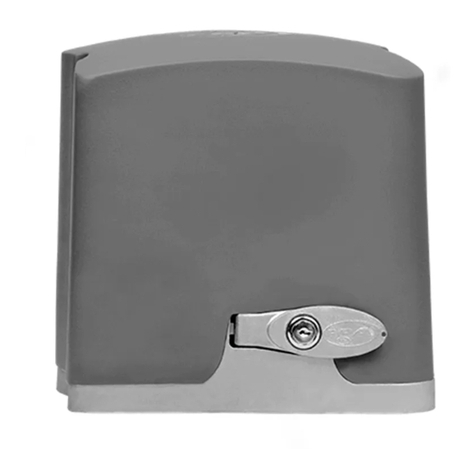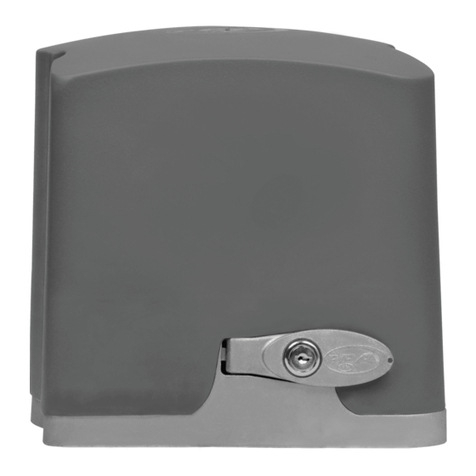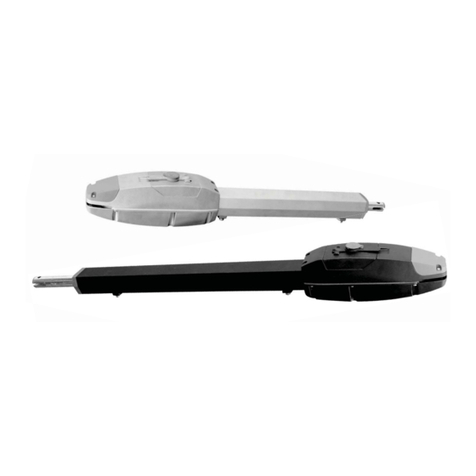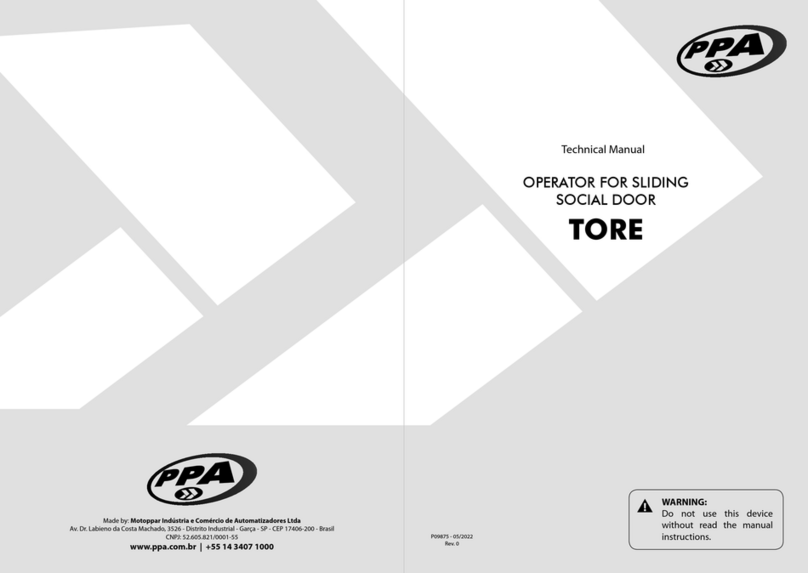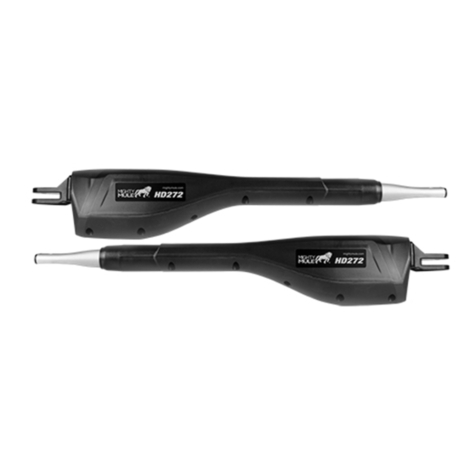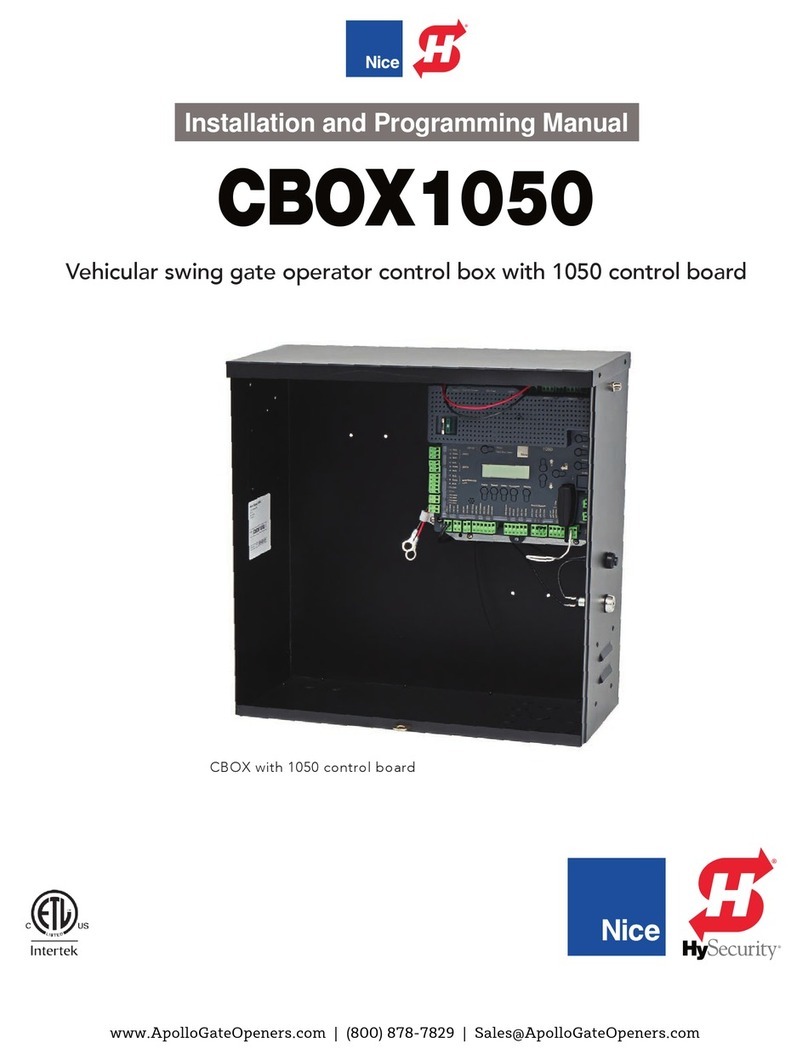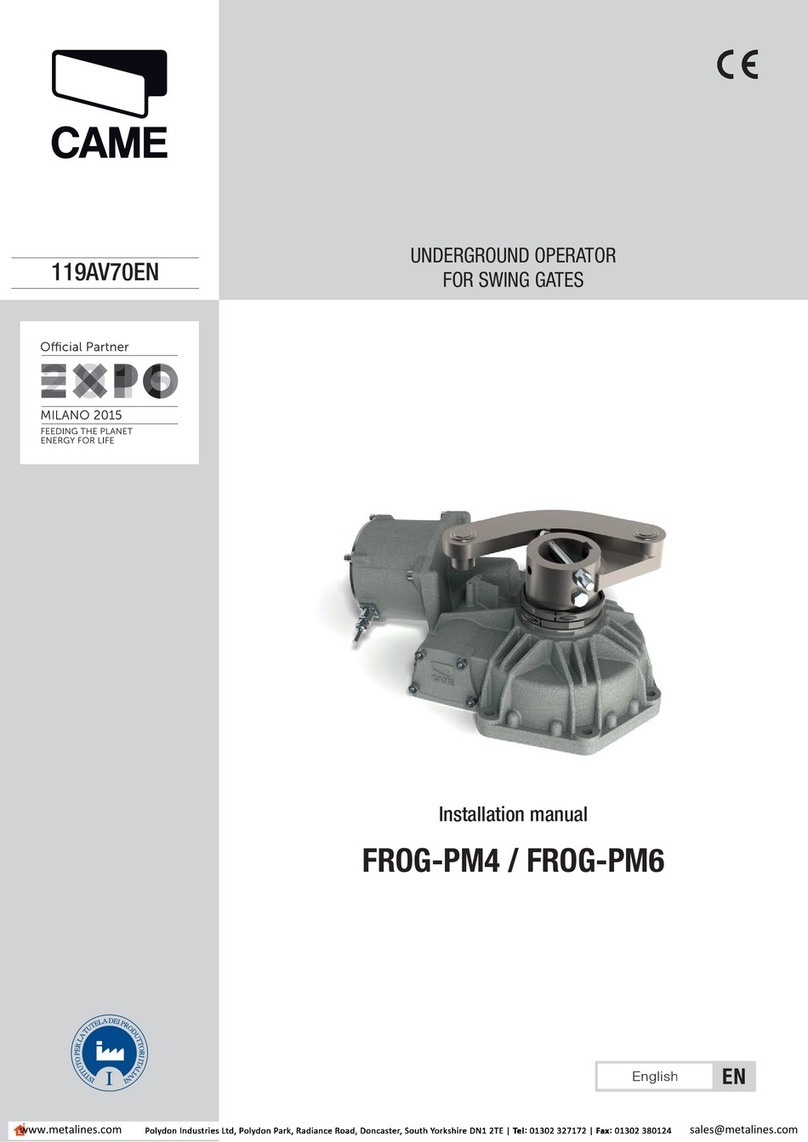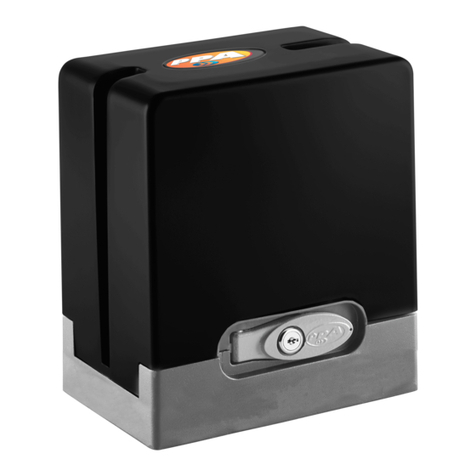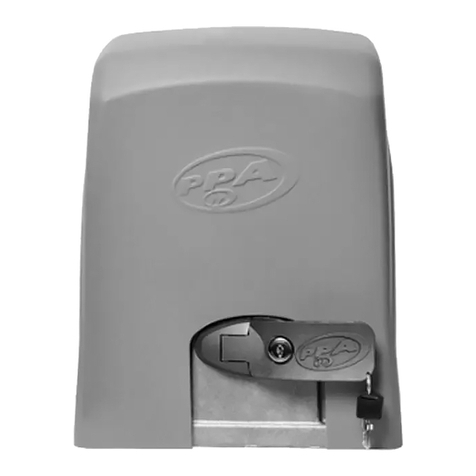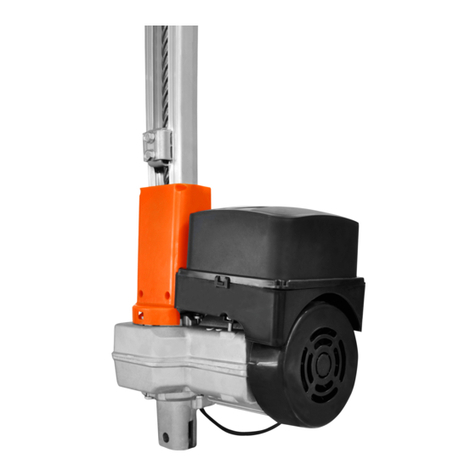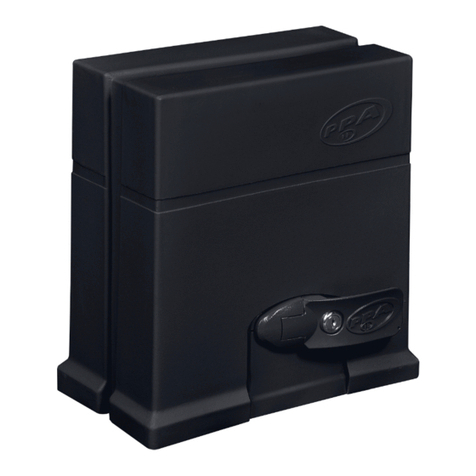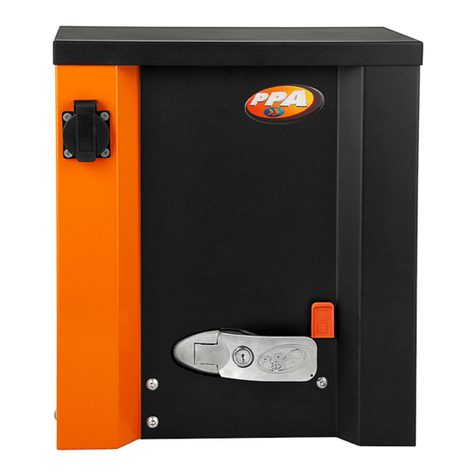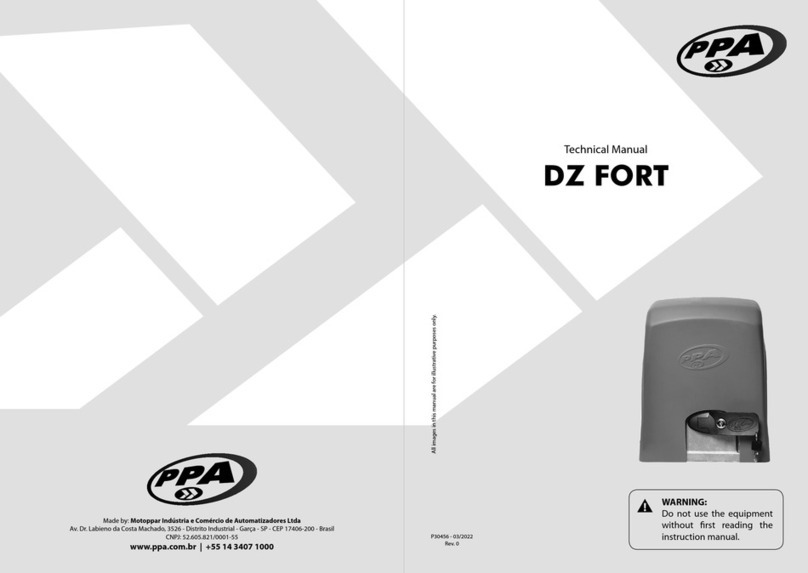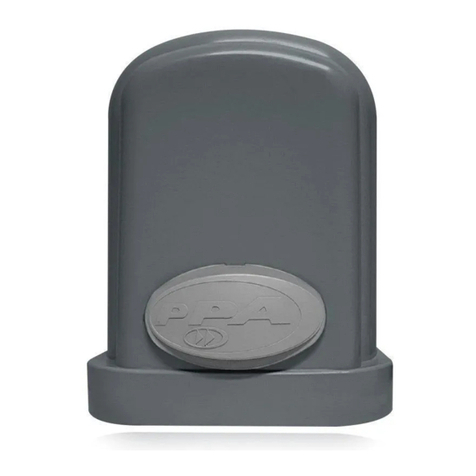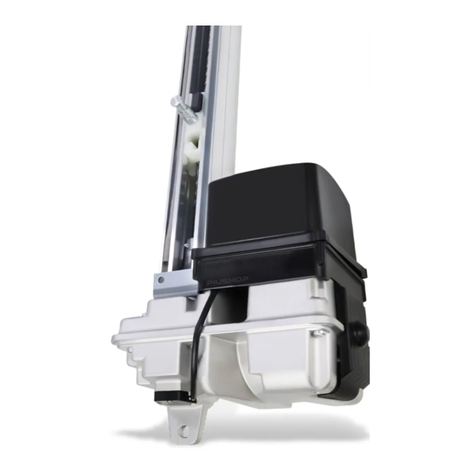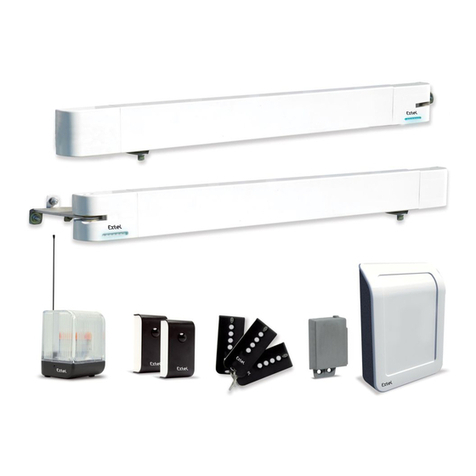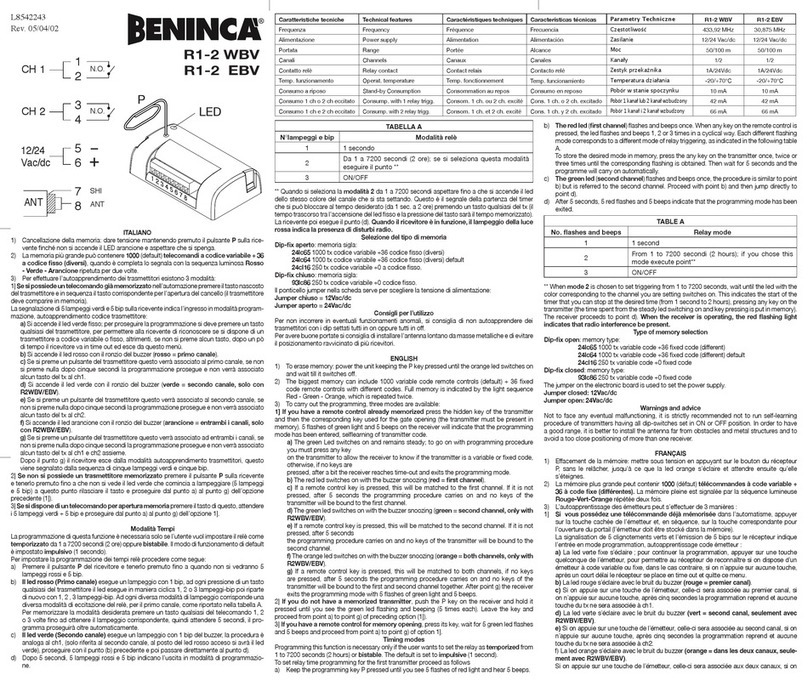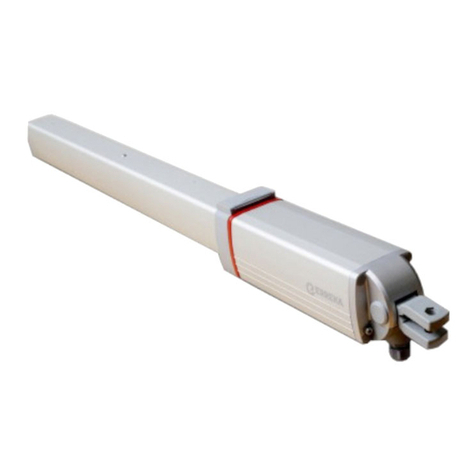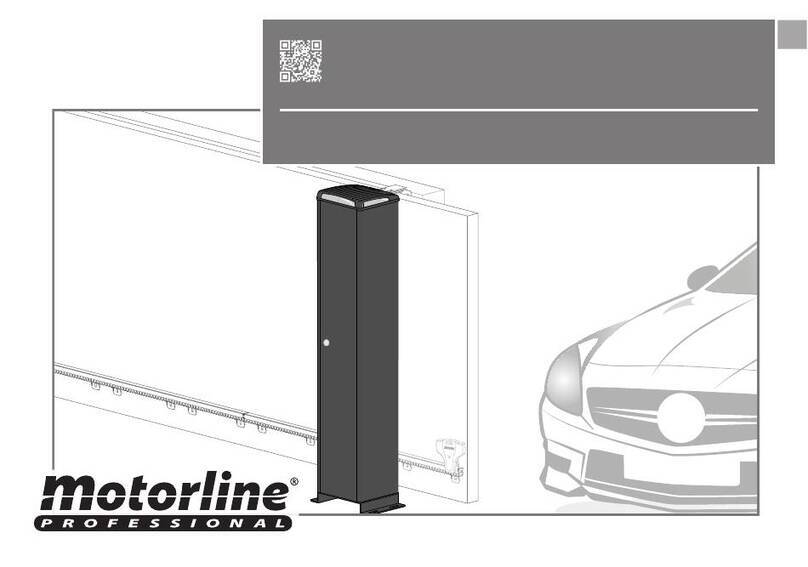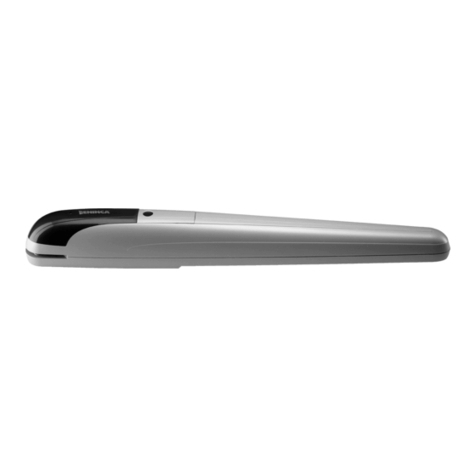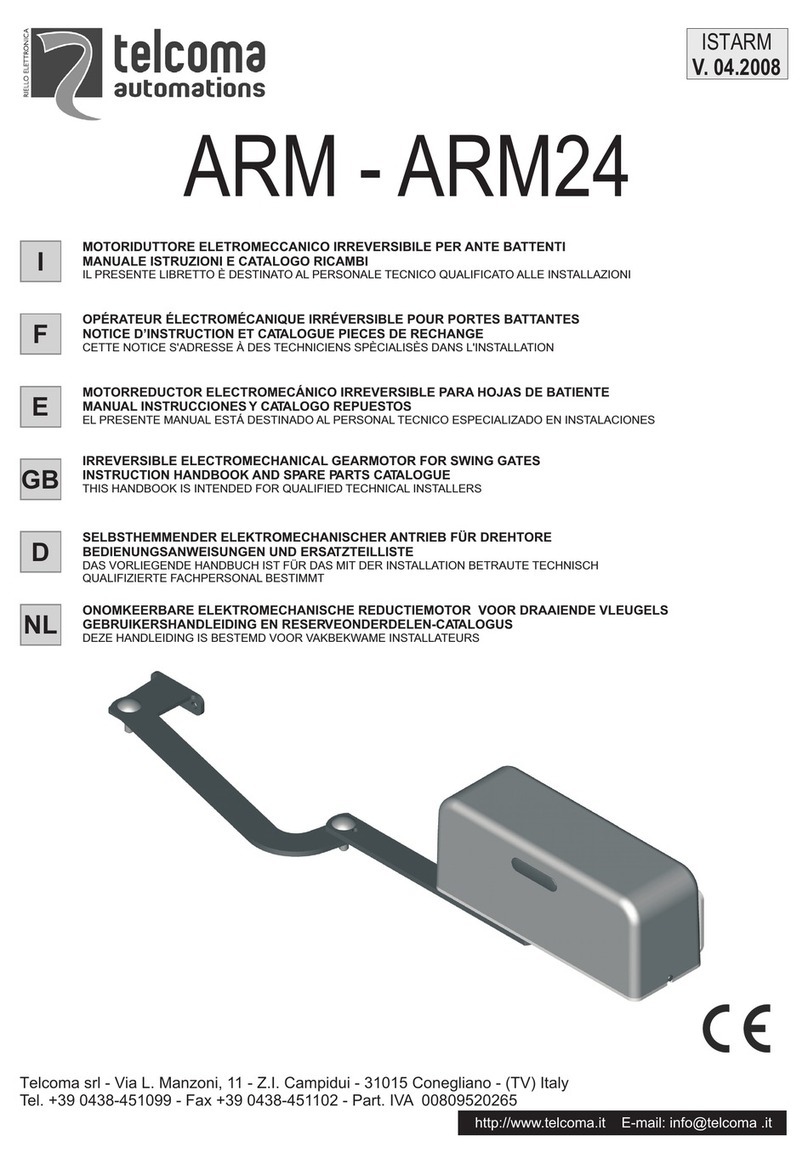
INDEX
1 - GATE OPERATOR CLASSIFICATIONS.......................................... 4
2 - SAFETY ACCESSORY SELECTION................................................ 4
3 - ENTRAPMENT PROTECTION TYPES ........................................... 4
4 - IMPORTANT SAFETY INSTRUCTIONS........................................ 5
4.1 – Safety Installation Information ............................. 5
5 - TECHNICAL SPECIFICATION ......................................................... 6
6 - GENERAL FEATURES ....................................................................... 6
7 – TECHNICAL SPECIFICATIONS AND DIMENSIONS ................ 7
8 - ELECTRICAL INSTALLATION ......................................................... 8
9 - CONCRETE PAD ................................................................................ 8
10 – BARRIER INSTALATION................................................................ 9
11 - INTRODUCTION: ELECTRONIC SYSTEM’S TECHNICAL
FEATURES ...............................................................................................15
12 - CONTROL BOARD........................................................................15
12.1 - Overview ...................................................................15
12.2 - Power Supply...........................................................16
12.3 - Induction Motor Connection.............................16
12.4 -‘ENC’ encoder connection ...................................16
12.5 -‘TRAVA’........................................................................17
12.6 -‘LUZ’courtesy light connection.........................17
12.7 -‘RX’separated receiver connection..................17
12.8 -‘BOT’ pushbutton connection............................17
12.9 -‘HIB’ end-of-stroke reeds connection..............17
12.10 -‘SCI’connector.......................................................17
13 - ENTRAPMENT PROTECTION SYSTEMS.................................18
13.1 - Internal Entrapment Protection
System (Type A) ..................................................................18
13.2 - External Entrapment Protection
System (Type B1)................................................................18
13.3 -‘FOT’ closing cycle photoelectric sensor ........18
13.4 -‘ABR’.............................................................................19
13.5 - 'FEC'.............................................................................19
14 - GATE SYSTEM LOGIC FUNCTION ...........................................19
14.1 – Getting started in barrier mode
(Barrier Arm travel recognition) ....................................19
14.2 – Barrier Operation after a power cycle
(travel recognized).............................................................19
15 - INVERTER PARAMETERS PROGRAMMING ..........................20
15.1 - Operator model selection...................................20
15.2 - JUMPER TST..............................................................20
15.3 - Adjustment of other parameters......................20
16 - ERASING THE RECOGNIZED TRAVEL.....................................23
17 - APPLYING THE DEFAULT STANDARD SETTINGS ...............23
18 - ACCESSORIES................................................................................24
18.1 - Garage Light ............................................................24
18.2 - Flashing lights .........................................................24
19 - EVENT / FAILURE INDICATION.................................................24
19.1 - Microcontroller functioning indication..........24
19.2 – Indication of over current or short
circuit on the motor .........................................................24
19.3 – EEPROM fault indication.....................................24
19.4 – EEPROM invalid data indication.......................24
19.5 - Open end-of-stroke indication..........................25
19.6 - Close end-of-stroke indication..........................25
19.7 - Capacitor load indication....................................25
19.8 – Encoder Test ............................................................25
19.9 - Thermal Protection ................................................25
20 - MAINTENANCE.............................................................................25
21 – METHODS OF TRIGGERING BARRIERS.................................26
22 – PROCEDURES FOR CLEANING AND MAINTENANCE......27
23 – OPERATION ON POWER OUTAGE .........................................27
24 - REPAIR PARTS................................................................................28
